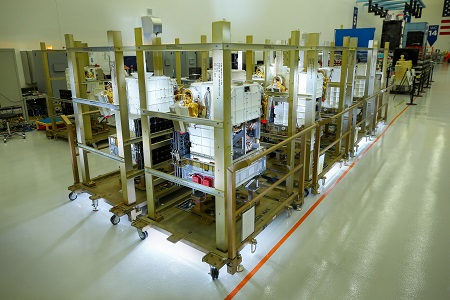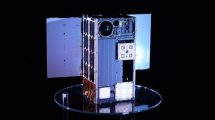
Lockheed Martin-built ten satellites have successfully been deployed into low-Earth orbit (LEO) in support of the Space Development Agency’s (SDA) Tranche 0 Transport Layer (T0TL) mission. SDA’s T0TL is a proliferated LEO constellation that will demonstrate low-latency communication and provide a resilient network of integrated capabilities.
The small satellites were launched aboard a SpaceX Falcon 9 rocket from Vandenberg Space Force Base in California. Soon after liftoff, SDA confirmed the separation of all 10 of the Lockheed Martin-built satellites from the launch vehicle.
Joe Rickers, Lockheed Martin’s vice president for Protected Communications, said: “Lockheed Martin is proud to be part of SDA’s mission to rapidly bring a threat-driven, resilient set of integrated space capabilities to life. We look forward to contributing more of our expertise to this mission to strengthen deterrence and deliver advanced military capabilities in space.”
Each satellite incorporates a Terran Orbital bus and payload processors and is equipped with SmartSat, Lockheed Martin’s software platform that makes it easier to dynamically add and quickly change missions in orbit through simple app uploads. The satellites also host Link 16 radios to introduce a terrestrial-proven network in space. Link-16 will enable sensor-to-shooter targeting by connecting systems that include fighter aircraft and Integrated Air and Missile Defense (IAMD) networks.
Lockheed Martin is currently building 42 satellites for SDA’s Tranche 1 Transport Layer (T1TL) and was recently awarded an agreement to build 36 of SDA’s 72 Beta variant satellites for its Tranche 2 Transport Layer (T2TL) constellation. The T1TL and T2TL Beta satellites will be assembled, integrated, and tested in Lockheed Martin’s new small satellite (smallsat) processing facility that is designed for the high-volume delivery of complete satellites.
Lockheed Martin is partnering with the best minds in the industry to support SDA’s mission to provide resilient national security space capabilities through a revolutionary approach of proliferation and spiral development. A diverse supplier base and small business partnerships, in addition to streamlined smallsat processing methods, enable the company to accelerate technology innovation and delivery.












Add Comment